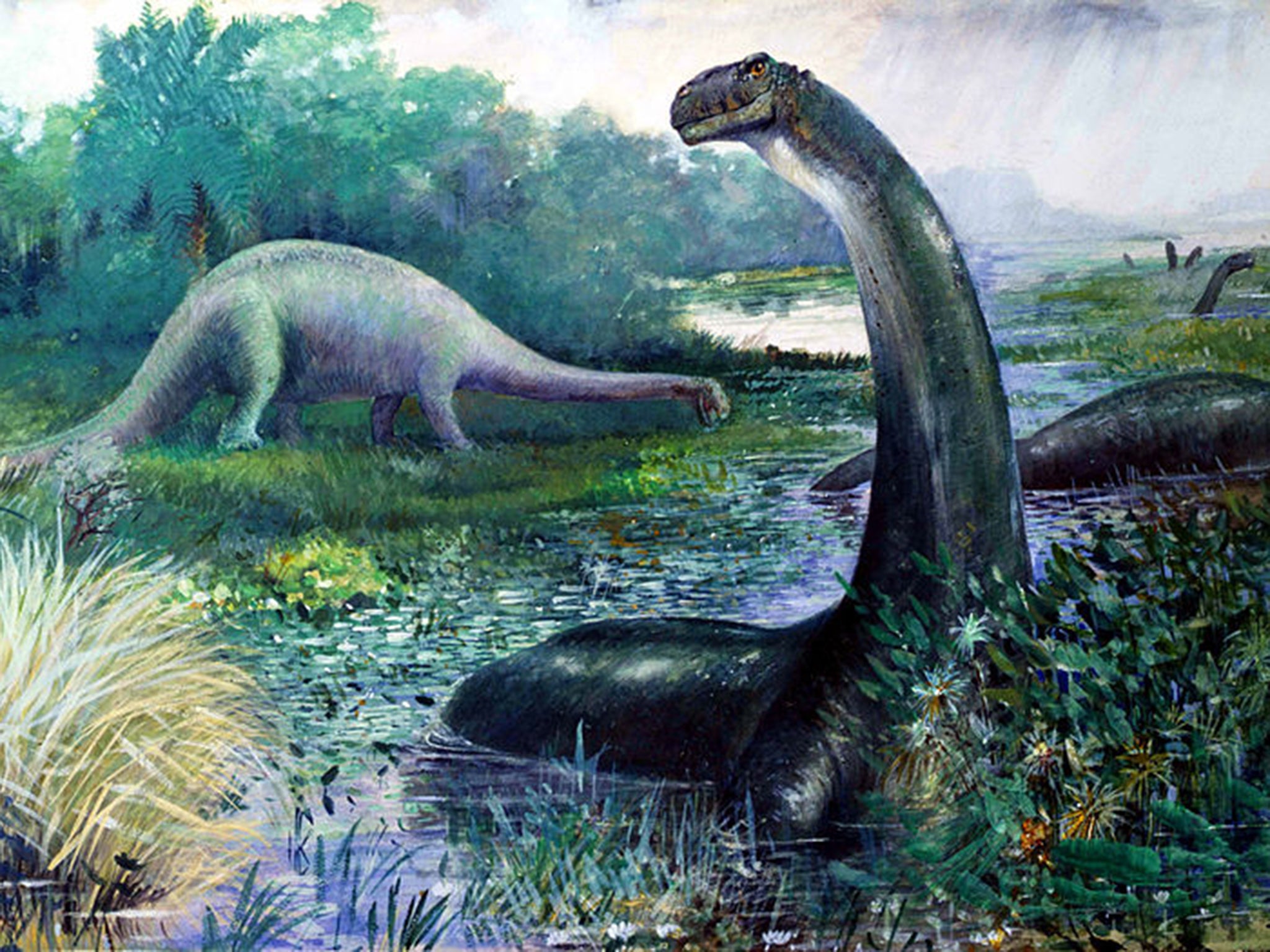The Brontosaurus has been officially classed as a dinosaur again
The “thunder lizard” has been proved as a species in its own right

The Brontosaurus, known fondly as one of the largest creatures to have ever walked the planet while having had one of the smallest brains of all the dinosaurs, is back.
The creature is still extinct, but it has now been re-classified as a dinosaur after being sent into exile by the scientific community.
Despite the Brontosaurus being widely labelled a dinosaur, experts as far back as 1903 have believed the label was given to the huge creature incorrectly – much the same as when Pluto was declassified to little more than a dwarf planet in 2006 - except the Brontosaurus's declassification was less well known about.
Experts believed the giant herbivore, which was around 75 feet tall, was not in fact a member of the Brontosaurus genus or “family”, and was instead an incorrectly classified Apatosaurus.
Despite the Brontosaurus not being recognised within scientific communities as a species in its own right, the name, which means “thunder lizard”, was hard to shake off, especially as it was taught to children in schools as having been a real dinosaur.
But now new research has shown that the Brontosaurus is, in fact, sufficiently different enough from an Apatosaurus to be offically re-named as a Brontosaurus, which has been celebrated by fans of the dinosaur across Twitter and has resurrected the debate over Pluto's declassification.
Scientists from the UK and Portugal submitted the evidence for resurrecting Brontosaurus in a study almost 300 pages long published in the open access journal PeerJ.
Dr Roger Benson, one of the authors from Oxford University, said: “The differences we found between Brontosaurus and Apatosaurus were at least as numerous as the ones between other closely related genera, and much more than what you normally find between species.”
Colleague Emanuel Tschopp, from Nova de Lisboa University in Portugal, said: “Our research would not have been possible at this level of detail 15 or more years ago. In fact, until very recently, the claim that Brontosaurus was the same as Apatosaurus was completely reasonable, based on the knowledge we had.”
The history of Brontosaurus is both complex and intriguing:
In the 1870s, palaeontologists led by Othniel Charles Marsh discovered two enormous partial skeletons of long-necked dinosaurs in the US and shipped them to the Yale Peabody Museum in New Haven, Connecticut.
Marsh described the first of the creatures as Apatosaurus ajax, the “deceptive lizard”, after the Greek hero Ajax. Two years later, he named the second skeleton Brontosaurus excelsus, the “noble thunder lizard”.
Neither skeleton was found with a skull, and Marsh reconstructed one for Brontosaurus excelsus. However, his reconstruction, based on evidence from another long-necked dinosaur, Camarasaurus, was later found to be wrong.
Shortly after Marsh's death, scientists from the Field Museum of Chicago found another skeleton similar both to Apatosaurus and Brontosaurus. In fact they were so similar that experts decided it would be correct to treat them as two species from the same genus: Apatosaurus.
The final blow to Brontosaurus came in the 1970s when researchers showed that Apatosaurus/Brontosaurus was not closely related to Camarasaurus but Diplodocus, another dinosaur from the same era.
Diplodocus had a slender, horse-like skull, not the box-like one reconstructed by Marsh and modelled on Camarasaurus. Thus the myth was born that Brontosaurus was actually an Apatosaurus with the wrong head.
For the new study the researchers used statistical techniques to calculate the differences between species and genera of “diplodocid” dinosaurs - a group that included some of the longest animals that ever walked on the Earth.
Two members of the group, Diplodocus and Supersaurus, may have reached lengths of up to 34 metres (112 ft). Apatosaurus, also from the group, had an average length of 22.8 metres (75 ft), and weighed around 16.4 tonnes.
Additional reporting by PA
Join our commenting forum
Join thought-provoking conversations, follow other Independent readers and see their replies
Comments